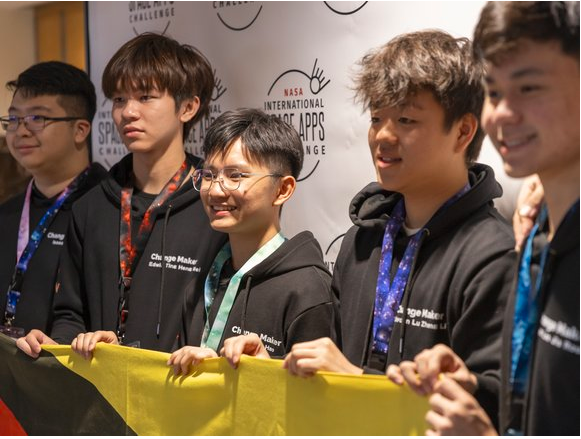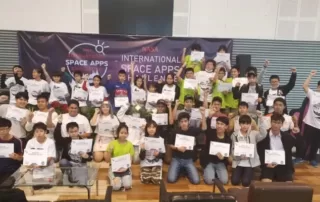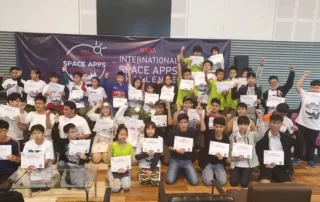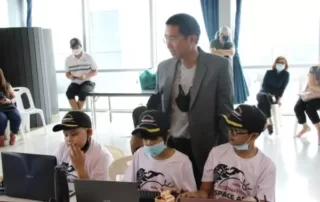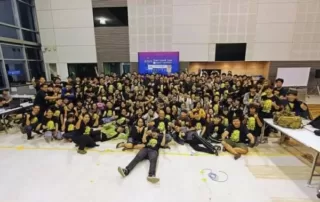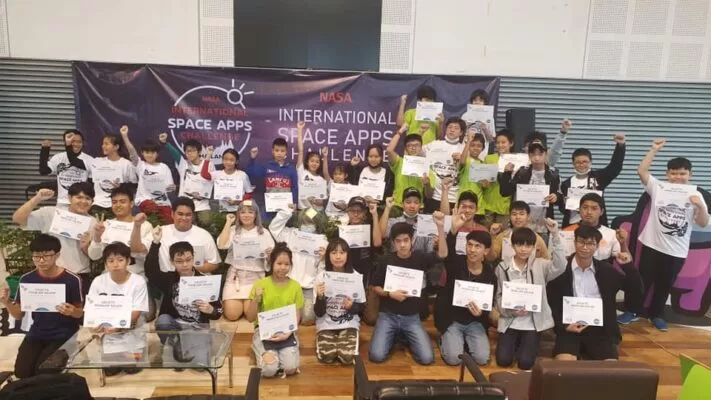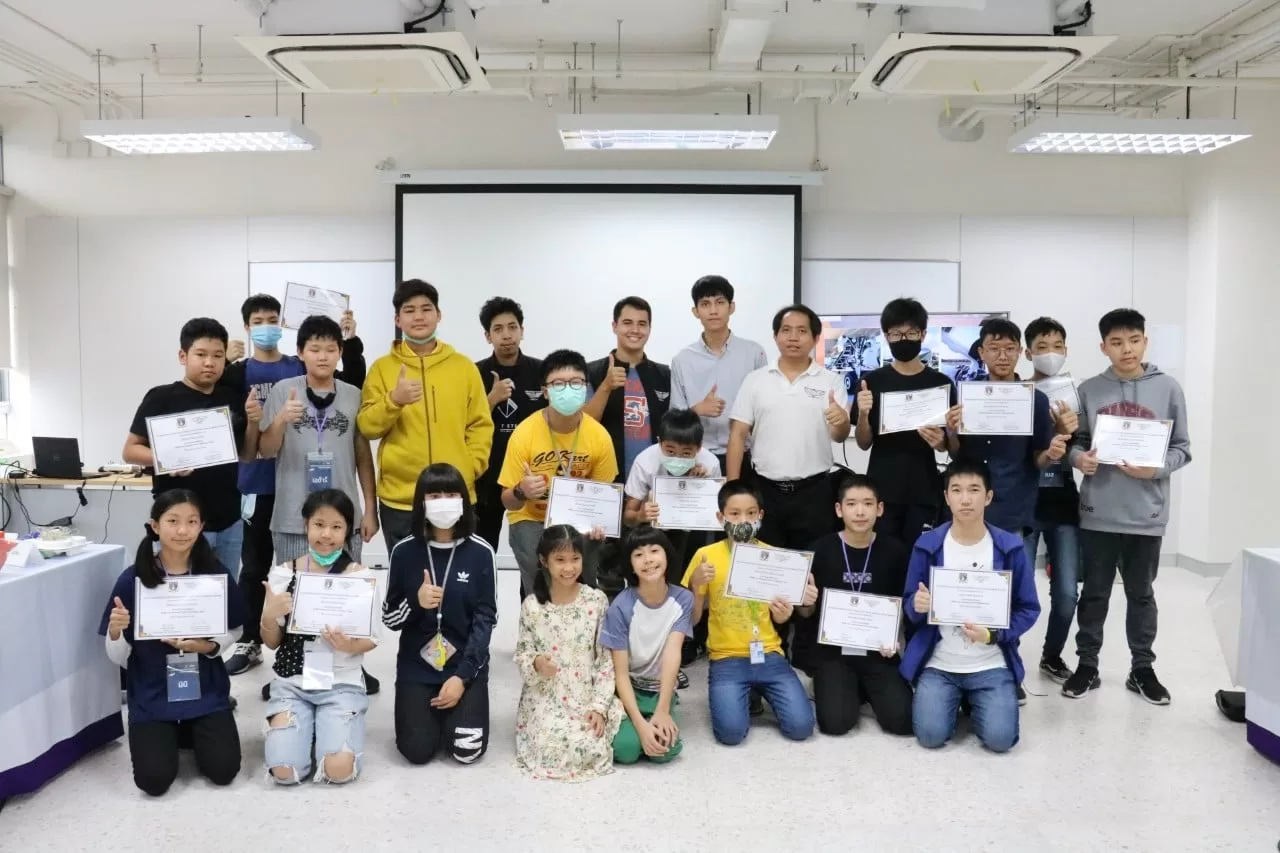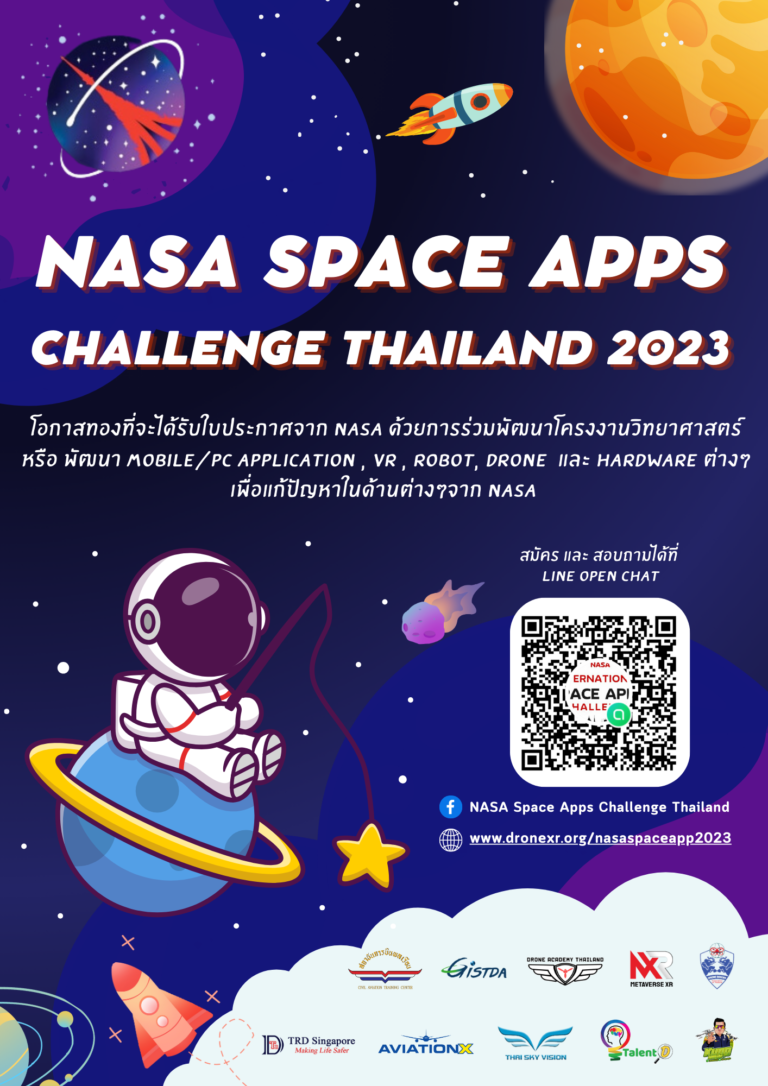
กติกาการเข้าร่วมการแข่งขันและการใช้ Openchat ประจำการแข่งขัน
การแข่งขันนี้ทางทีมงานผู้จัดและกรรมการไม่ได้งบสนับสนุนจากหน่วยงานรัฐหรือเอกชนจากภายนอก ได้รับเพียงการสนับสนุนการประชาสัมพันธ์
ทีมงานผู้จัดทุกคนสละเวลาและวันหยุดจัดกิจกรรมเพื่อให้เยาวชนของไทยได้มีโอกาสดีๆ ในกิจกรรมดังกล่าว ท่านโปรดเข้าใจและเห็นใจทีมงาน ขออภัยหากมาตรฐานยังไม่เป็นไปตามที่ท่านคาดหวัง
โปรดติดต่อทีมงานด้วยความสุภาพและรักษามารยาทที่ดี เข้าใจในความเสียสละและจิตสาธารณะ หลีกเลี่ยงการสร้างปัญหาใดๆ โปรดเคารพในกฎหมู่ มีมารยาททีดีและปฏิบัติตามระเบียบต่อไปนี้อย่างเคร่งครัด
1. หากท่านไม่สามารถเดินทางมารับใบวุฒิบัตรสำหรับการแข่งขันจะไม่ได้รับอนุมัติในการเข้าร่วมการแข่งขันในทุกกรณี สำนักงานผู้จัดการแข่งขัน ( ณ. เมืองทองธานี จังหวัด นนทบุรี)
2. ไม่โพสต์ข้อความที่เป็นร้องเรียน เรื่องที่เป็นลบ เรื่องส่วนตัวในห้องรวม หรือ เรื่องและเนื้อหาใดสร้างความเสียหาย หรือทำลายภาพลักษณ์ที่ดีต่อการแข่งขันในห้องนี้
โปรดติดต่อช่องทาง LINE OA หลักของทางทีมงานผู้จัด LINE ID: @droneacademy เท่านั้น หากพบการละเมิดใดจะแบนออกทันทีโดยไม่แจ้งให้ทราบล่วงหน้า
3. เคารพให้เกียรติผู้จัดการแข่งขัน และกรรมการ ไม่สร้างบรรยากาศที่เป็นลบหรือทำลายบรรยากาศที่ดีในการแข่งขัน หรือการอยู่ร่วมกันในสังคมที่ดี
4. ผู้ปกครองหรือเยาวชนที่เข้าร่วมทุกคนที่สมัครเข้ามาต้องศึกษารายละเอียดการแข่งขันให้ครบถ้วน dronexr.org/nasaspaceapp2023 หลีกเลี่ยงถามข้อมูลซ้ำโดยที่ไม่ศึกษารายละเอียดต่างๆไว้ก่อนแล้ว
5. ผู้สมัครใดๆที่สมัครเข้ามาจะไม่ได้รับการยืนยันเข้าร่วมหากมีประวัติหรือพฤติกรรมขัดแย้งกับการเป็นผู้เข้าร่วมการแข่งขันที่ดีเช่น มีการพูดจาไม่เหมาะสม , พฤติกรรมก้าวร้าว ไม่เคารพทีมงานหรือกรรมการ มาก่อน
6. การตัดสินของกรรมการและคณะจัดการแข่งขัน ถือเป็นอันสิ้นสุด ไม่สามารถโต้แย้งใดๆ
7. หากพบการทุจริตเช่นการไป Copy งานและไม่มีการอ้างอิงที่มาของ Code หรือสิ่งที่นำมาใช้ในผลงานท่านจะถูกตัดสิทธิ์ในการแข่งขันทันที
8. การใช้คำพูดวาจา หรือพฤติกรรมไม่สุภาพใดๆ ต่อผู้จัดการแข่งขัน และกรรมการท่านจะถูกตัดสิทธิ์การแข่งขันทันที
9. หากท่านถูกตัดสิทธิ์แล้วไม่มีสิทธิ์ในการรับใบวุฒิบัตรใดๆทั้งจากผู้จัดและจาก NASA ทั้งสิ้น หากต้องการขอความอนุเคราะห์
โปรดติดต่อทีมผู้จัดด้วยความสุภาพ
10. ไม่ Promote กิจกรรมใดๆที่ไม่ใช่ของผู้จัดการแข่งขันโดยไม่ได้รับอนุญาต
11.หากสมาชิกคนหนึ่งคนใดของทีมทำผิดกติกาข้างต้นจะถูกเพิกถอนสิทธิ์ในการแข่งขั้นทั้งหมดทั้งทีม
Space Apps คืออะไร?
NASA International Space Apps Challenge (Space Apps) เป็นงานแฮ็กกาธอนระดับนานาชาติสำหรับนักเขียนโค้ดนักวิทยาศาสตร์ นักออกแบบ นักเล่าเรื่อง ผู้ผลิต ผู้สร้าง นักเทคโนโลยี และอื่นๆ ในเมืองต่างๆทั่วโลก โดยที่ทีมต่างๆ จะเข้าร่วมกับ National Aeronautics and Space Administration (NASA’s) ฟรี และเปิดข้อมูลเพื่อแก้ไขปัญหาในโลกแห่งความเป็นจริงบนโลกและในอวกาศ
ธีมความท้าทายของ NASA International Space Apps Challenge ปี 2023 คือ “Explore Open Science Together” ที่ Space Apps เรามุ่งมั่นที่จะก้าวข้ามอุปสรรคในการเข้าถึงโอกาสด้านอวกาศและวิทยาศาสตร์ Space Apps สำหรับทุกคน! ผู้เข้าร่วมจากทั่วโลกให้ความต้อนรับโดยไม่คำนึงถึงภูมิหลังและประสบการณ์ในการคิด สำรวจ เรียนรู้ และสร้างร่วมกัน ในแต่ละปี Space Apps Challenge เรายังคงสนับสนุนและส่งเสริมแนวคิดผ่านนวัตกรรม
ร่วมพัฒนา Application บน Computer, Mobile, VR และ Hardware ต่างๆสำหรับแก้ไขปัญหาในด้านต่างๆที่ทาง NASA กำหนดภายในระยะเวลา 48 ชั่วโมง
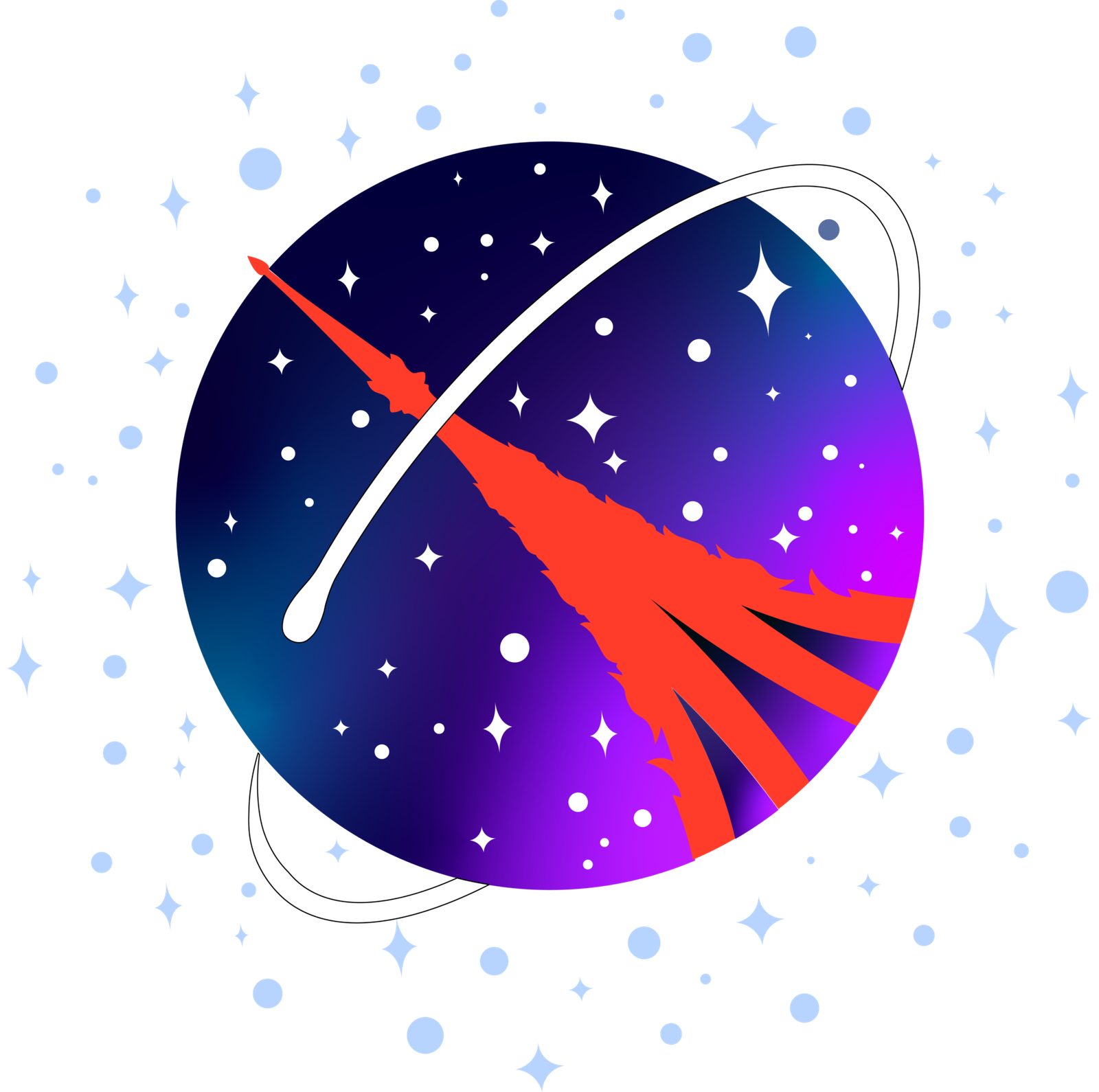
กำหนดการสำคัญ/Important Date
โครงการ Space Apps Challenge สมัครที่ไหน?
Space Apps 2023 จะจัดขึ้นในวันที่ 7 – 8 ตุลาคม 2023โดยผู้สนใจสามารถลงทะเบียนเพื่อเข้าร่วมงานการแข่งขันได้ที่ปุ่ม Register ด้านล่างนี้
โครงการ Space Apps Challenge จัดที่ไหน?
แข่งขันผ่านระบบออนไลน์ : Virtual Meeting
ผู้เข้าร่วมจะได้รับอะไรในการเข้าร่วมการแข่งขัน
ผู้เข้าร่วมการแข่งขันทุกท่าน หลังจบการเข้าร่วมแล้ว สามารถมีสิทธิที่จะได้รับใบวุฒิบัตร ที่ได้รับการรับรองโดย National Aeronautics and Space Administration (NASA) ประเทศสหรัฐอเมริกา

เสื้อประจำการแข่งขันปี 2020-2023
(แบบอื่นๆ จะ Update ในอนาคต)
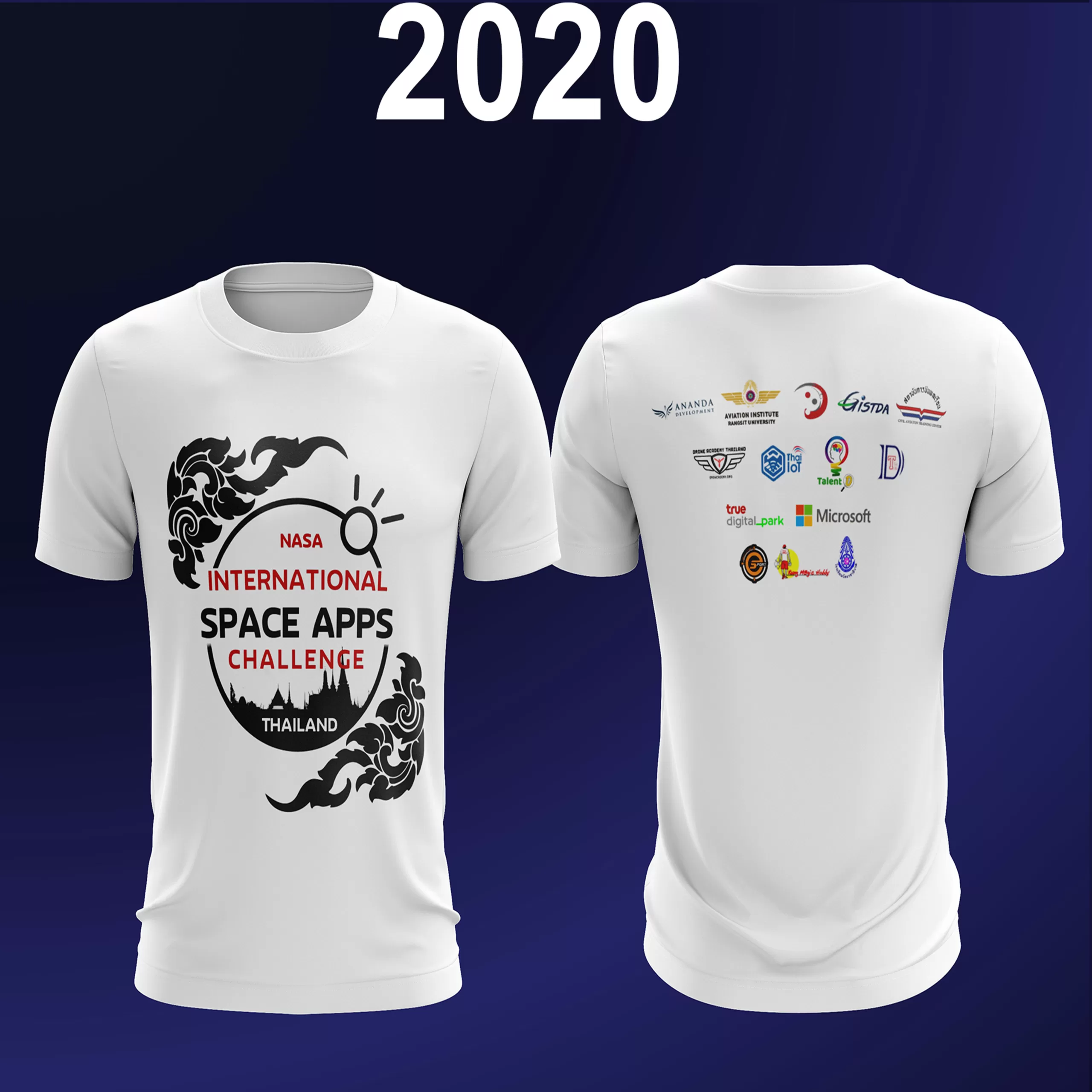
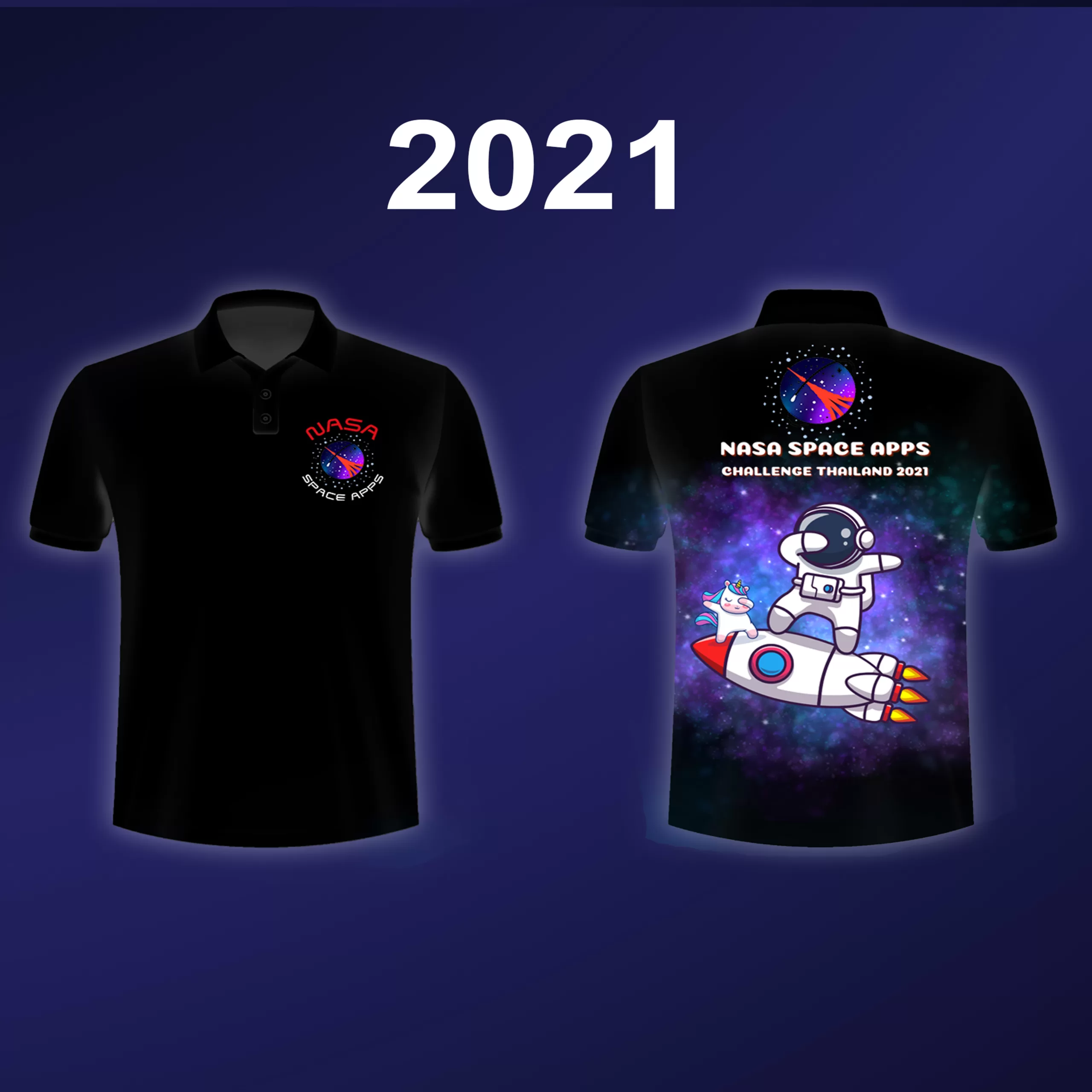
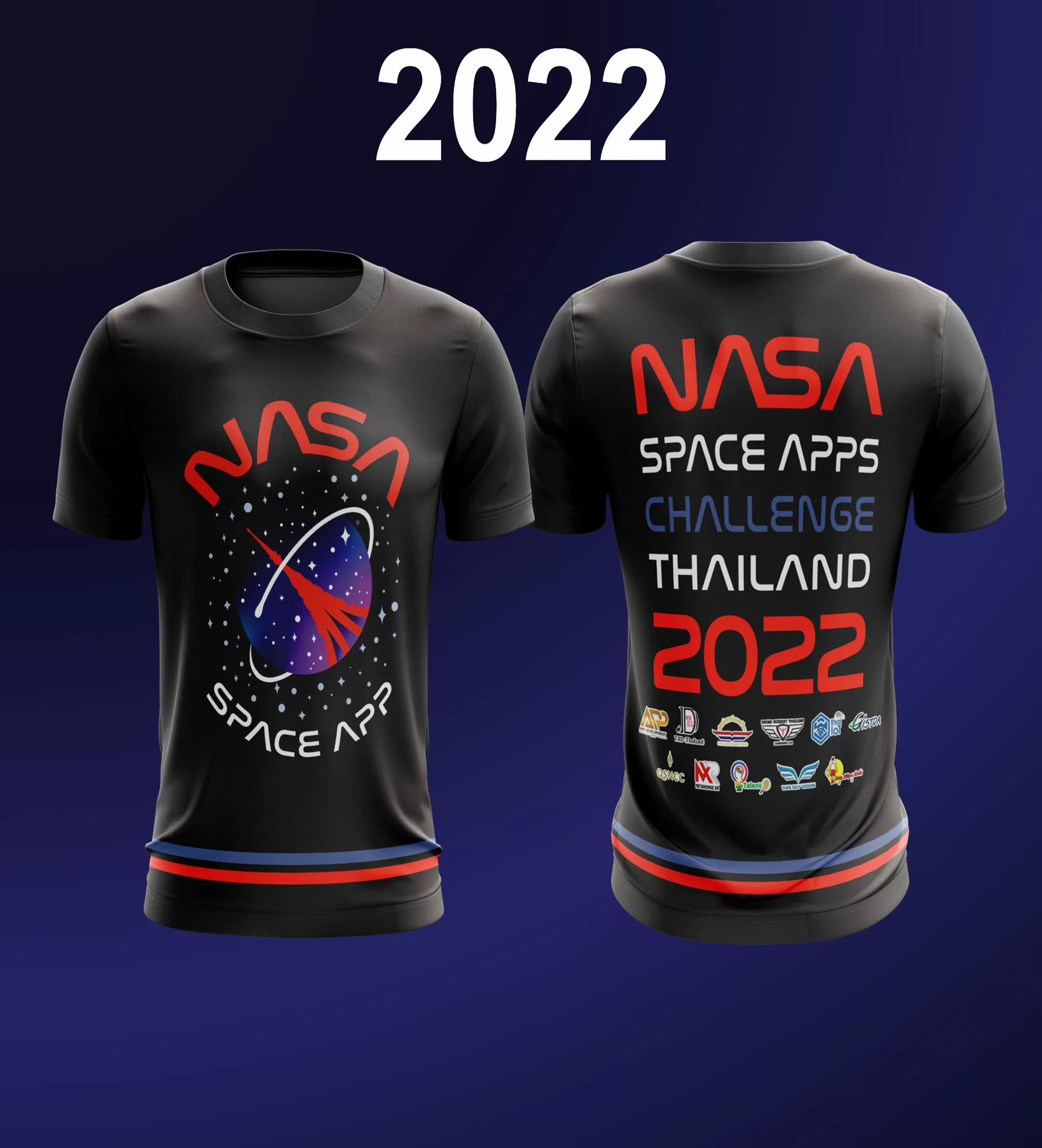
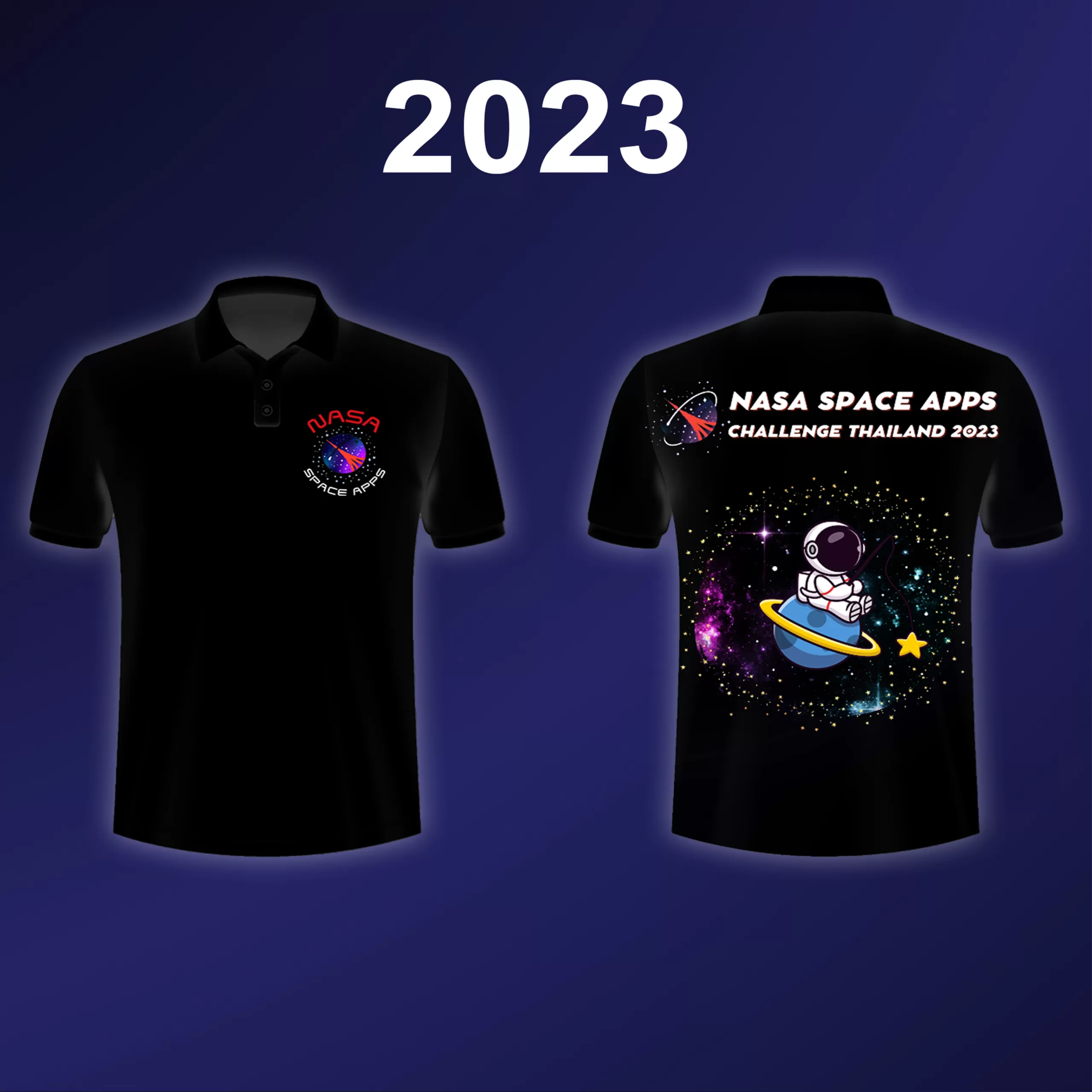
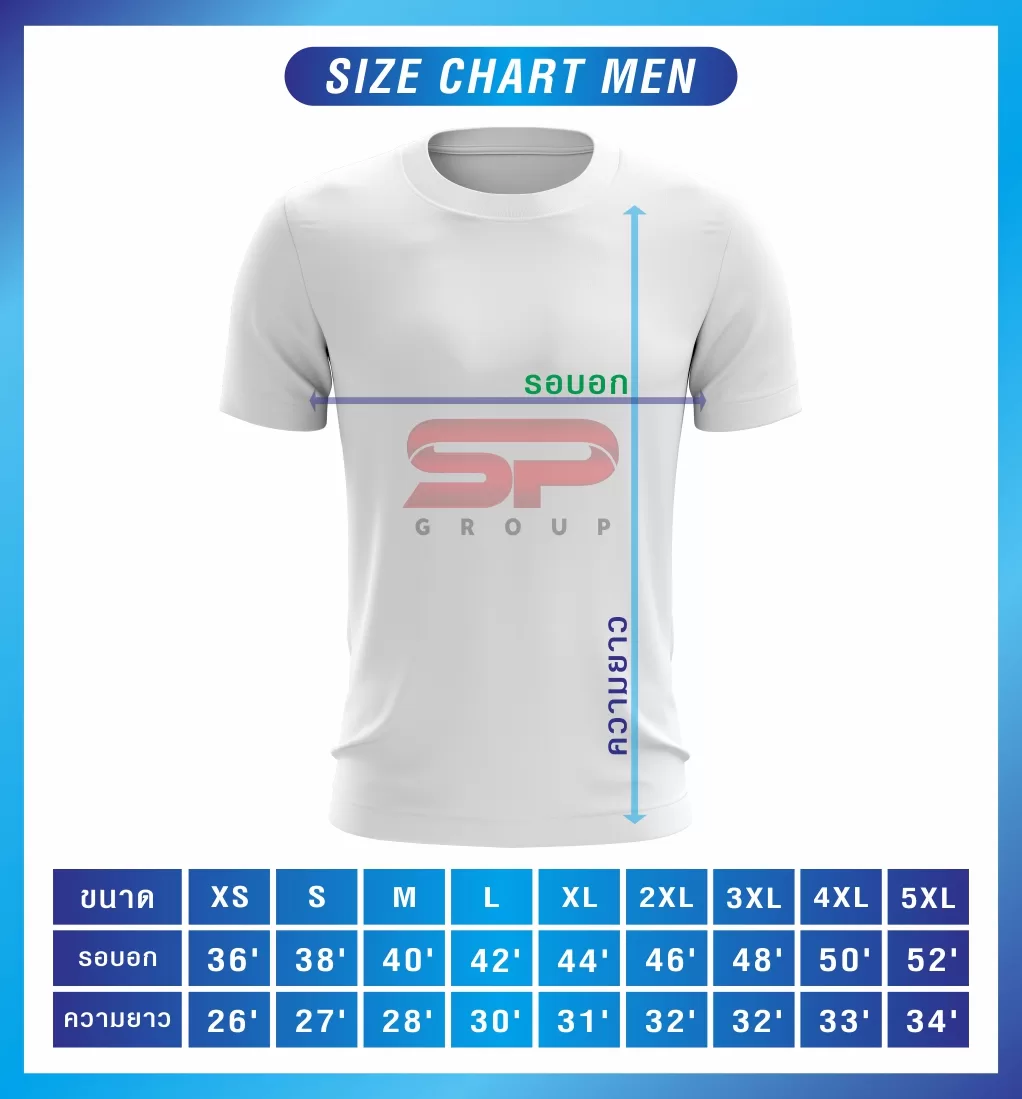
หัวข้อ Challenge การแข่งขัน
Explore Open Science Together
 There are many different open science and open-source projects and tools, but no efficient way to match project creators with interested collaborators who possess the skills required to contribute. Your challenge is to create a solution that will help people who are looking for open-source projects to work on and project creators who need skilled contributors to find each other and communicate.
There are many different open science and open-source projects and tools, but no efficient way to match project creators with interested collaborators who possess the skills required to contribute. Your challenge is to create a solution that will help people who are looking for open-source projects to work on and project creators who need skilled contributors to find each other and communicate.
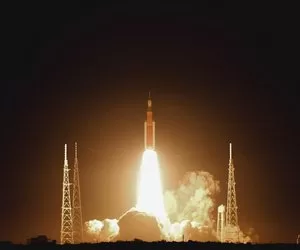 NASA’s Artemis II mission will bring a lot of firsts to the world–it will be the first mission to send a woman, a person of color, and a Canadian to lunar space. Your challenge is to create a short video to share how the development of the Artemis II mission is impacting you and your community, wherever you may be.
NASA’s Artemis II mission will bring a lot of firsts to the world–it will be the first mission to send a woman, a person of color, and a Canadian to lunar space. Your challenge is to create a short video to share how the development of the Artemis II mission is impacting you and your community, wherever you may be.
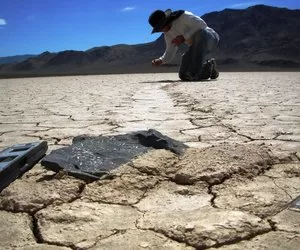 Picture a geologist. Do you imagine someone who spends their days in remote field areas looking at rocks? Our planet and its geology can also be studied from space using only a computer and NASA data. Your challenge is to create an app that enables geologists to use NASA’s Earth observation data to conduct research. Use your imagination to show us that geology doesn’t always require field work to rock!
Picture a geologist. Do you imagine someone who spends their days in remote field areas looking at rocks? Our planet and its geology can also be studied from space using only a computer and NASA data. Your challenge is to create an app that enables geologists to use NASA’s Earth observation data to conduct research. Use your imagination to show us that geology doesn’t always require field work to rock!
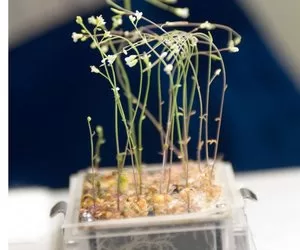 Transfer learning is a machine learning technique in which a model is pretrained on a large, broad dataset to encode underlying features and relationships, and then refined using a smaller dataset for a specific problem space. This technique is relevant to space biology research, where datasets typically have limited sample size and the problem space is restricted. Your challenge is: (1) to design a comprehensive database of publicly available biomedical datasets that could be used to pretrain different models for a “model zoo,” and (2) to determine relevant publicly available space biology datasets that could then be used to refine the models to investigate specific space
Transfer learning is a machine learning technique in which a model is pretrained on a large, broad dataset to encode underlying features and relationships, and then refined using a smaller dataset for a specific problem space. This technique is relevant to space biology research, where datasets typically have limited sample size and the problem space is restricted. Your challenge is: (1) to design a comprehensive database of publicly available biomedical datasets that could be used to pretrain different models for a “model zoo,” and (2) to determine relevant publicly available space biology datasets that could then be used to refine the models to investigate specific space
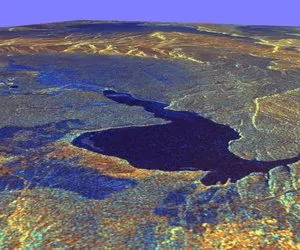 SAR (synthetic aperture radar) is a powerful tool for studying our planet and is used to investigate Earth processes—from earthquakes and volcanic eruptions to ice sheet changes and forest cover. Your challenge is to bring complex SAR data down to Earth by creating innovative artwork that highlights the unique perspective of SAR sensors. Create a digital art piece (image, video, 3D model, etc.) based on SAR imagery and related products—a work of SARt!
SAR (synthetic aperture radar) is a powerful tool for studying our planet and is used to investigate Earth processes—from earthquakes and volcanic eruptions to ice sheet changes and forest cover. Your challenge is to bring complex SAR data down to Earth by creating innovative artwork that highlights the unique perspective of SAR sensors. Create a digital art piece (image, video, 3D model, etc.) based on SAR imagery and related products—a work of SARt!
 Participants are invited to create their own challenge to tackle, but these are not eligible for Global Judging.
Participants are invited to create their own challenge to tackle, but these are not eligible for Global Judging.
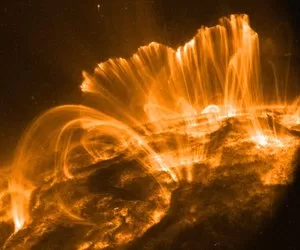 When operating reliably, the National Oceanic and Atmospheric Administration’s (NOAA’s) space weather station, the Deep Space Climate Observatory (DSCOVR), can measure the strength and speed of the solar wind in space, which enables us to predict geomagnetic storms that can severely impact important systems like GPS and electrical power grids on Earth. DSCOVR, however, continues to operate past its expected lifetime and produces occasional faults that may themselves be indicators of space weather. Your challenge is to use the “raw” data from DSCOVR—faults and all—to predict geomagnetic storms on Earth.
When operating reliably, the National Oceanic and Atmospheric Administration’s (NOAA’s) space weather station, the Deep Space Climate Observatory (DSCOVR), can measure the strength and speed of the solar wind in space, which enables us to predict geomagnetic storms that can severely impact important systems like GPS and electrical power grids on Earth. DSCOVR, however, continues to operate past its expected lifetime and produces occasional faults that may themselves be indicators of space weather. Your challenge is to use the “raw” data from DSCOVR—faults and all—to predict geomagnetic storms on Earth.
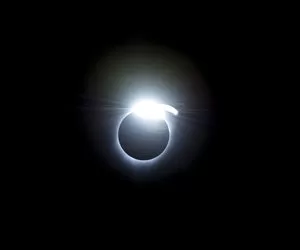 Eclipses are awe-inspiring celestial events that drastically change the appearance of one of the two biggest objects we see in our sky: our Sun and Moon. On Earth, people can experience eclipses when Earth, the Moon, and the Sun align. Your challenge is to create a game, activity, or story for young learners that explains the mechanics of eclipses, including eclipse seasons, how and why eclipses occur, and why only some people on Earth can see an eclipse at a given time.
Eclipses are awe-inspiring celestial events that drastically change the appearance of one of the two biggest objects we see in our sky: our Sun and Moon. On Earth, people can experience eclipses when Earth, the Moon, and the Sun align. Your challenge is to create a game, activity, or story for young learners that explains the mechanics of eclipses, including eclipse seasons, how and why eclipses occur, and why only some people on Earth can see an eclipse at a given time.
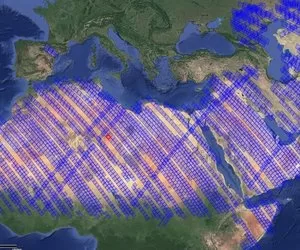 Since its July 14, 2022 launch to the space station, the EMIT hyperspectral visible/short-wave infrared sensor has been extremely useful! It is identifying the composition of Earth’s surface and how mineral dust influences global warming. It’s helping to detect methane and carbon dioxide point source emissions to directly address greenhouse gas sources of climate change. EMIT has the potential to revolutionize this field of remote sensing, but if you haven’t heard about this sensor, you’re not alone! Your challenge is to develop an app that can help raise community awareness of what EMIT is, how it can be used, and what has already been accomplished with its data.
Since its July 14, 2022 launch to the space station, the EMIT hyperspectral visible/short-wave infrared sensor has been extremely useful! It is identifying the composition of Earth’s surface and how mineral dust influences global warming. It’s helping to detect methane and carbon dioxide point source emissions to directly address greenhouse gas sources of climate change. EMIT has the potential to revolutionize this field of remote sensing, but if you haven’t heard about this sensor, you’re not alone! Your challenge is to develop an app that can help raise community awareness of what EMIT is, how it can be used, and what has already been accomplished with its data.
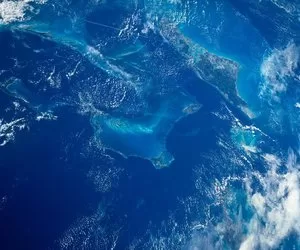 Earth has 370 quintillion gallons of water – but only 0.01% of that is freshwater that we can use. As climate change alters the global water cycle, this precious resource is in danger of becoming even more scarce. Your challenge is to create a visual tool to help students better understand the complete path of water across the entire Earth system and how the availability of this critical resource is affected by our changing climate.
Earth has 370 quintillion gallons of water – but only 0.01% of that is freshwater that we can use. As climate change alters the global water cycle, this precious resource is in danger of becoming even more scarce. Your challenge is to create a visual tool to help students better understand the complete path of water across the entire Earth system and how the availability of this critical resource is affected by our changing climate.
 Use your skills to explore life on Earth! New imaging spectrometer data from NASA is dramatically improving our ability to measure and monitor biodiversity from space. Your challenge is to use publicly available imaging spectroscopy data to characterize and map a biodiversity hotspot in South Africa.
Use your skills to explore life on Earth! New imaging spectrometer data from NASA is dramatically improving our ability to measure and monitor biodiversity from space. Your challenge is to use publicly available imaging spectroscopy data to characterize and map a biodiversity hotspot in South Africa.
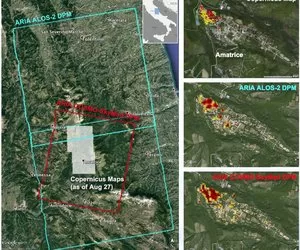 Researchers face challenges in developing accurate and efficient artificial intelligence (AI) models for geospatial analytics tasks, especially when the availability of labeled data (i.e., data that has been annotated or tagged with specific information) is limited. Your challenge is to leverage existing geospatial foundation models to develop fine-tuned models that can support disaster recovery operations or real-time environmental monitoring, with the aim of improving the effectiveness and efficiencies of these critical operations.
Researchers face challenges in developing accurate and efficient artificial intelligence (AI) models for geospatial analytics tasks, especially when the availability of labeled data (i.e., data that has been annotated or tagged with specific information) is limited. Your challenge is to leverage existing geospatial foundation models to develop fine-tuned models that can support disaster recovery operations or real-time environmental monitoring, with the aim of improving the effectiveness and efficiencies of these critical operations.
 Are we alone in the universe? To address this question, NASA’s next flagship space telescope, the Habitable Worlds Observatory (HWO), will search for habitable planets beyond our solar system. What do you think these worlds will look like? Your challenge is to use publicly available information on habitable worlds to design your own habitable world and write about what life might be like on it.
Are we alone in the universe? To address this question, NASA’s next flagship space telescope, the Habitable Worlds Observatory (HWO), will search for habitable planets beyond our solar system. What do you think these worlds will look like? Your challenge is to use publicly available information on habitable worlds to design your own habitable world and write about what life might be like on it.
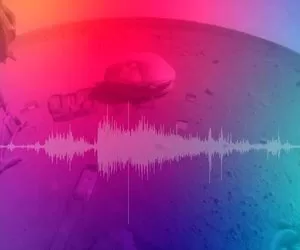 NASA offers a variety of “sonifications” – translations of 2D astronomical data into sound –that provide a new way to experience imagery and other information from space. Advanced instruments currently provide hyperspectral (many color) images from space that are 3D (two spatial dimensions and one color dimension), and sophisticated techniques can be used to enhance 2D astronomical images to make video representations called “fly-throughs” that allow viewers to experience what it would look like to move among space objects in 3D (three simulated spatial dimensions). Your challenge is to design a method to create sonifications of these 3D NASA space datasets to provide a different perceptual path that can help us understand and appreciate the wonders of the universe!
NASA offers a variety of “sonifications” – translations of 2D astronomical data into sound –that provide a new way to experience imagery and other information from space. Advanced instruments currently provide hyperspectral (many color) images from space that are 3D (two spatial dimensions and one color dimension), and sophisticated techniques can be used to enhance 2D astronomical images to make video representations called “fly-throughs” that allow viewers to experience what it would look like to move among space objects in 3D (three simulated spatial dimensions). Your challenge is to design a method to create sonifications of these 3D NASA space datasets to provide a different perceptual path that can help us understand and appreciate the wonders of the universe!
 Data from the three Earth-observing platforms on the International Space Station are used to advance science across various disciplines, but currently only one of these platforms has a streamlined data monitoring and access pipeline. This limitation hampers the scientific community’s ability to integrate datasets and produce boundary shattering, innovative, interdisciplinary science. Your challenge is to expand the functionality of the open-source web-based tool—VSWIR (Visible to ShortWave InfraRed) Imaging Spectroscopy Interface for Open Science (VISIONS)— to include more remote sensing platforms and/or enhanced features.
Data from the three Earth-observing platforms on the International Space Station are used to advance science across various disciplines, but currently only one of these platforms has a streamlined data monitoring and access pipeline. This limitation hampers the scientific community’s ability to integrate datasets and produce boundary shattering, innovative, interdisciplinary science. Your challenge is to expand the functionality of the open-source web-based tool—VSWIR (Visible to ShortWave InfraRed) Imaging Spectroscopy Interface for Open Science (VISIONS)— to include more remote sensing platforms and/or enhanced features.
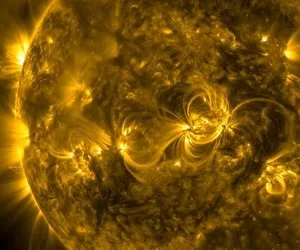 Magnetic reconnection (MR) is a process in which opposing magnetic field lines merge. If magnetic reconnection occurs between the interplanetary magnetic field (IMF) and Earth’s magnetic field, solar-wind plasma particles are permitted to enter the region of space near Earth (the geospace), potentially causing space weather events that could impact satellites in Earth orbit, as well as power systems on Earth. Your challenge is to develop a computer program for the public that analyzes the IMF vector components measured by spacecraft to assess how often magnetic reconnection occurs.
Magnetic reconnection (MR) is a process in which opposing magnetic field lines merge. If magnetic reconnection occurs between the interplanetary magnetic field (IMF) and Earth’s magnetic field, solar-wind plasma particles are permitted to enter the region of space near Earth (the geospace), potentially causing space weather events that could impact satellites in Earth orbit, as well as power systems on Earth. Your challenge is to develop a computer program for the public that analyzes the IMF vector components measured by spacecraft to assess how often magnetic reconnection occurs.
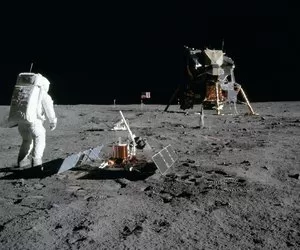 When they explored the Moon, NASA’s Apollo astronauts left behind several instruments to collect geophysical data near each Apollo landing site. Your challenge is to develop an app for the public that plots the seismic data these instruments transmitted back to Earth on an interactive 3-D digital moon globe.
When they explored the Moon, NASA’s Apollo astronauts left behind several instruments to collect geophysical data near each Apollo landing site. Your challenge is to develop an app for the public that plots the seismic data these instruments transmitted back to Earth on an interactive 3-D digital moon globe.
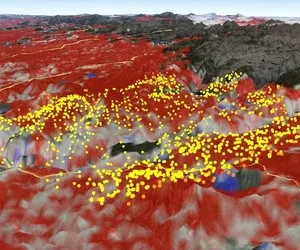 NASA’s satellite-derived active fire data are freely available and provide valuable information to a wide range of users. However, as wildfires continue to increase in frequency, number, and size, the need for more diverse stakeholder groups to understand and use these data is rapidly expanding. Your challenge is to develop solutions to address fire and natural resource monitoring through innovative use of technology and publicly available data, enabling local communities to report and monitor fires and/or improve current data distribution.
NASA’s satellite-derived active fire data are freely available and provide valuable information to a wide range of users. However, as wildfires continue to increase in frequency, number, and size, the need for more diverse stakeholder groups to understand and use these data is rapidly expanding. Your challenge is to develop solutions to address fire and natural resource monitoring through innovative use of technology and publicly available data, enabling local communities to report and monitor fires and/or improve current data distribution.
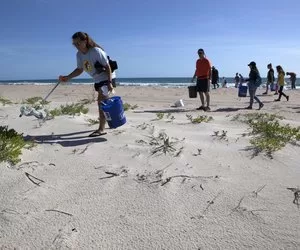 The world is facing many big challenges like climate change, water insecurity, and diseases; addressing these challenges in innovative ways requires interdisciplinary research using data from multiple sources. Many U.S. government agencies have substantial archives of high-quality, freely available data, but these archives can be difficult to navigate. Your challenge is to design a platform to explore open data that is available from NASA and other federal data repositories or to improve the functionality of an existing such platform, and then demonstrate how your solution can be applied to an area of study that has significant societal benefits (e.g., environmental justice, ecological conservation, or human heal
The world is facing many big challenges like climate change, water insecurity, and diseases; addressing these challenges in innovative ways requires interdisciplinary research using data from multiple sources. Many U.S. government agencies have substantial archives of high-quality, freely available data, but these archives can be difficult to navigate. Your challenge is to design a platform to explore open data that is available from NASA and other federal data repositories or to improve the functionality of an existing such platform, and then demonstrate how your solution can be applied to an area of study that has significant societal benefits (e.g., environmental justice, ecological conservation, or human heal
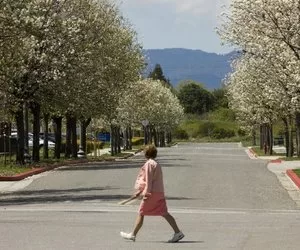 Satellites can tell us a lot about the Earth system. We can learn about air quality, water quality, tree canopy, and even urban heat from the vantage point of space. This information is even more powerful when combined with information about people living on the ground. Your challenge is to look around your neighborhood or town and formulate a question about how the environment and humans are related, research the question using data from NASA satellites and information about people, and present your findings in a creative way.
Satellites can tell us a lot about the Earth system. We can learn about air quality, water quality, tree canopy, and even urban heat from the vantage point of space. This information is even more powerful when combined with information about people living on the ground. Your challenge is to look around your neighborhood or town and formulate a question about how the environment and humans are related, research the question using data from NASA satellites and information about people, and present your findings in a creative way.
 Imagine you visit a landlocked region where none of the inhabitants have ever been to the ocean. Although they may not be aware of it, every single day these people breathe oxygen generated by marine photosynthesis, benefit from the lowered atmospheric carbon dioxide (CO2) levels induced by marine phytoplankton, and consume food that was fueled by marine ecosystems. In essence, the ocean can be viewed as a garden that provides beauty, resources, and CO2 drawdown for society. Your challenge is to create an accessible platform that visually, sonically, and interactively educates users about important ocean-provided services in a way they can easily understand.
Imagine you visit a landlocked region where none of the inhabitants have ever been to the ocean. Although they may not be aware of it, every single day these people breathe oxygen generated by marine photosynthesis, benefit from the lowered atmospheric carbon dioxide (CO2) levels induced by marine phytoplankton, and consume food that was fueled by marine ecosystems. In essence, the ocean can be viewed as a garden that provides beauty, resources, and CO2 drawdown for society. Your challenge is to create an accessible platform that visually, sonically, and interactively educates users about important ocean-provided services in a way they can easily understand.
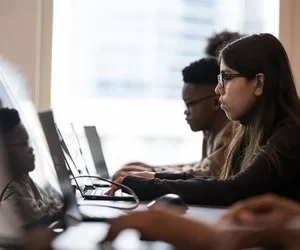 NASA’s Science Mission Directorate (SMD) is committed to making the scientific process open to broad participation from start to finish. Making NASA science more accessible, inclusive, and reproducible accelerates the pace of science, broadens the participation of historically underrepresented groups, and enables scientific discoveries. Your challenge is to think of creative new ways to determine the impact of open science, using examples from NASA science to highlight your methods.
NASA’s Science Mission Directorate (SMD) is committed to making the scientific process open to broad participation from start to finish. Making NASA science more accessible, inclusive, and reproducible accelerates the pace of science, broadens the participation of historically underrepresented groups, and enables scientific discoveries. Your challenge is to think of creative new ways to determine the impact of open science, using examples from NASA science to highlight your methods.
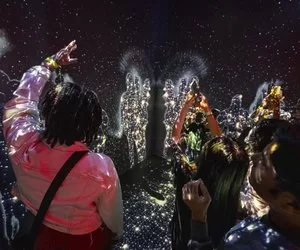 2023 is a Year of Open Science! Sharing success stories is a great way to showcase the wonderful open science work accomplished by the global community, and provides real-world examples of successful ways to integrate open science into the scientific workflow. Your challenge is to tell an open science success story in a creative way using any form of storytelling—from singing to poetry to dance to puppetry to acrobatics and beyond!
2023 is a Year of Open Science! Sharing success stories is a great way to showcase the wonderful open science work accomplished by the global community, and provides real-world examples of successful ways to integrate open science into the scientific workflow. Your challenge is to tell an open science success story in a creative way using any form of storytelling—from singing to poetry to dance to puppetry to acrobatics and beyond!
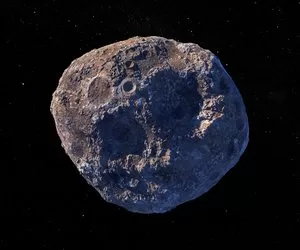 NASA’s Psyche mission will explore the Psyche asteroid in the asteroid belt between Mars and Jupiter. Space exploration may feel unattainable for many, but crafting and play can remove barriers and make everyone feel included in the adventure! Your challenge is to create a Psyche-themed party package that engages learners of all ages in hands-on, creative, and “crafty” play and is accessible, sustainable, and feasible enough to be replicated by families as well as museum, library, and school staff.
NASA’s Psyche mission will explore the Psyche asteroid in the asteroid belt between Mars and Jupiter. Space exploration may feel unattainable for many, but crafting and play can remove barriers and make everyone feel included in the adventure! Your challenge is to create a Psyche-themed party package that engages learners of all ages in hands-on, creative, and “crafty” play and is accessible, sustainable, and feasible enough to be replicated by families as well as museum, library, and school staff.
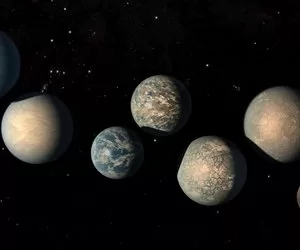 In the distant future, space tourism will likely be routine for Earth dwellers, but space travelers will need help choosing a destination and determining an itinerary. Imagine you are a travel agent at a future space tourism office. Your challenge is to create a tool that will not only develop customized itineraries for future travelers who want to visit the main bodies in our solar system—perhaps Mars, Jupiter, or Saturn—but also educate present-day users about the many different objects in our solar system.
In the distant future, space tourism will likely be routine for Earth dwellers, but space travelers will need help choosing a destination and determining an itinerary. Imagine you are a travel agent at a future space tourism office. Your challenge is to create a tool that will not only develop customized itineraries for future travelers who want to visit the main bodies in our solar system—perhaps Mars, Jupiter, or Saturn—but also educate present-day users about the many different objects in our solar system.
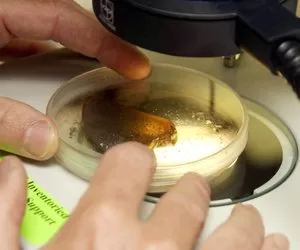 Deep space exploration exposes human astronauts, animals, and plants to the stressors of the space environment, including increased radiation and altered gravity. Digital twins (DT) (computational models of physical systems, which can be perturbed to predict the behavior of the real systems) can help us understand the impacts of these stressors. An open-source project called “OpenWorm” aims to develop a DT/virtual organism of C. elegans, a small worm that has been featured in several NASA space experiments. Your challenge is to design an open-source project where the community can contribute to developing a C. elegans digital twin that can help determine the effects of factors that impact living organisms in space.
Deep space exploration exposes human astronauts, animals, and plants to the stressors of the space environment, including increased radiation and altered gravity. Digital twins (DT) (computational models of physical systems, which can be perturbed to predict the behavior of the real systems) can help us understand the impacts of these stressors. An open-source project called “OpenWorm” aims to develop a DT/virtual organism of C. elegans, a small worm that has been featured in several NASA space experiments. Your challenge is to design an open-source project where the community can contribute to developing a C. elegans digital twin that can help determine the effects of factors that impact living organisms in space.
 Greetings, space enthusiast! Are you tired of slogging through technical requirements, only to find omissions and inconsistencies that could spell disaster for your mission? What if there was an Artificial Intelligence (AI)-powered app called STAR (Standards Technical Assistance Resource) that could streamline the process and offer requirement recommendations? Your challenge is to develop the approach, code, or procedure for STAR, so that with STAR as a copilot, mission designers can blast off with even greater confidence, knowing that they have the right requirements in place.
Greetings, space enthusiast! Are you tired of slogging through technical requirements, only to find omissions and inconsistencies that could spell disaster for your mission? What if there was an Artificial Intelligence (AI)-powered app called STAR (Standards Technical Assistance Resource) that could streamline the process and offer requirement recommendations? Your challenge is to develop the approach, code, or procedure for STAR, so that with STAR as a copilot, mission designers can blast off with even greater confidence, knowing that they have the right requirements in place.
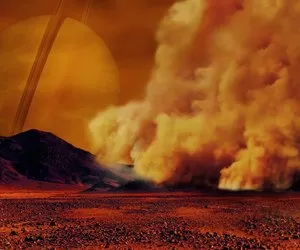 We are only just beginning to consider long-term habitation on the Moon and Mars, but what would be required in the distant future for successful exploration of even more remote planets or the icy moons of the gas giants, such as Saturn’s moon Titan? Your challenge is to create an educational game (digital or analog) that poses these challenges, explores potential solutions, and inspires new generations of space explorers.
We are only just beginning to consider long-term habitation on the Moon and Mars, but what would be required in the distant future for successful exploration of even more remote planets or the icy moons of the gas giants, such as Saturn’s moon Titan? Your challenge is to create an educational game (digital or analog) that poses these challenges, explores potential solutions, and inspires new generations of space explorers.
 Imagine an Earth-orbiting satellite, or an Earth-to-Moon mission that requires an orbital transfer maneuver, or a spacecraft in a cyclical orbit around Earth and Mars, or a deep space probe that traverses the asteroid belt. Understanding and visualizing sophisticated space missions isn’t easy! Your challenge is to create an interactive, virtual reality application that enables users to visualize a space mission including the mission concept, orbital trajectories, and mission timeline.
Imagine an Earth-orbiting satellite, or an Earth-to-Moon mission that requires an orbital transfer maneuver, or a spacecraft in a cyclical orbit around Earth and Mars, or a deep space probe that traverses the asteroid belt. Understanding and visualizing sophisticated space missions isn’t easy! Your challenge is to create an interactive, virtual reality application that enables users to visualize a space mission including the mission concept, orbital trajectories, and mission timeline.
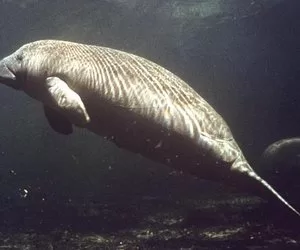 Have you ever been swimming in a natural body of water and felt curious about the microscopic and larger life all around you, or what else is living in the water? There is a vast amount of life in oceans, rivers, and lakes—most of which cannot be seen with our eyes! Your challenge is to create an app that notifies people of endangered species in the bodies of water around them, explains what they can do to help preserve those species, and informs them how to use the water for recreation in a respectful way.
Have you ever been swimming in a natural body of water and felt curious about the microscopic and larger life all around you, or what else is living in the water? There is a vast amount of life in oceans, rivers, and lakes—most of which cannot be seen with our eyes! Your challenge is to create an app that notifies people of endangered species in the bodies of water around them, explains what they can do to help preserve those species, and informs them how to use the water for recreation in a respectful way.
 The Helio Big Year (HBY) runs from October 2023 through December 2024, and includes two major solar eclipses over the Americas, the Sun’s solar maximum (when sunspots are the most numerous and solar flares are more common), and the closest approach to the Sun of NASA’s Heliophysics flagship mission–the Parker Solar Probe. As we like to say, “The Sun Touches Everything!” and millions are expected to take part in HBY events. Your challenge is to develop a creative method to identify and inform people who can significantly contribute to Heliophysics citizen scientist projects, and encourage them to participate in multiple projects by highlighting the connections between these various projects.
The Helio Big Year (HBY) runs from October 2023 through December 2024, and includes two major solar eclipses over the Americas, the Sun’s solar maximum (when sunspots are the most numerous and solar flares are more common), and the closest approach to the Sun of NASA’s Heliophysics flagship mission–the Parker Solar Probe. As we like to say, “The Sun Touches Everything!” and millions are expected to take part in HBY events. Your challenge is to develop a creative method to identify and inform people who can significantly contribute to Heliophysics citizen scientist projects, and encourage them to participate in multiple projects by highlighting the connections between these various projects.
ติดตาม / สอบถามการแข่งขัน
Drone Academy Officials
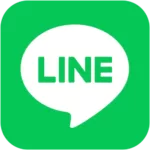
LINE: @droneacademy
ผู้ชนะรางวัล NASA Space Apps Thailand ในปี 2023
1. ระดับอุดมศึกษา GALACTIC Promblem-Solver (สำหรับผู้เข้าร่วม)
ผู้ชนะเลิศได้แก่ ทีม 404
2.ระดับม.ปลาย GALACTIC Senior high school Academic
อันดับที่1 : Stellar Eagle
อันดับที่2 : Ipaosanglui
อันดับที่3 : 6G
2.1ระดับม.ปลาย GALACTIC Promblem-Solver (สำหรับผู้เข้าร่วม)
RockZy
Nasean
Hello Verse
Little Light
Dream Grab Star
SOVIKUL
3. ระดับม.ต้น GALACTIC junior high school Academic winner
อันดับที่1 : AstroNASABot
อันดับที่2: Stellar Dwellers
อันดับที่3 : Rubinte
3.1ระดับม.ต้น GALACTIC Promblem-Solver (สำหรับผู้เข้าร่วม)
ผู้ชนะเลิศ ได้แก่ ทีม Viridian
4.ระดับประถม GALACTIC Promblem-Solver (สำหรับผู้เข้าร่วม)
ผู้ชนะเลิศ ได้แก่ ทีม Mission To NASA with WTP
คำถามที่พบบ่อย
1. เป้าหมายของ Space App คืออะไร
- เพื่อสร้างแรงบันดาลใจในการทำงานร่วมกัน, ความคิดสร้างสรรค์ รวมไปถึงการคิดเชิงลึก
- เพื่อเสริมสร้างความสนใจที่มีต่อวิทยาศาสตร์และการสำรวจอวกาศ
- เพื่อเพิ่มความตื่นตัวต่อข้อมูลของนาซ่า
- เพื่อพัฒนาตัวนักวิทยาศาสตร์ นักเทคโนโลยี วิศวกร รุ่นต่อๆไป
2. วันงานสำคัญต่างๆ
- มีการให้ข้อมูลสรุปของความท้าทายและสามารถดูได้ที่ 2023.spaceappschallenge.org/challenges/
- ในวันที่ 8 กันยายน ความท้าทายทั้งหมดจะปรากฏให้เห็น
- ภายในกลางเดือนกันยายน ข้อความท้าทายทั้งหมดและแหล่งข้อมูลจะเผยแพร่บนเว็บไซต์ เริ่มคิดถึงความท้าทายที่คุณต้องการจัดการ!
- วันที่ 22 กันยายน การฝึกปฏิบัติเสมือนจริงจะเริ่มขึ้น และ Rocket Chat จะเปิดขึ้นเพื่อให้สามารถเข้าถึงข้อมูลเพิ่มเติมและการสร้างทีมได้
- 07 ตุลาคม 23 เวลา 09:00 เริ่มแข่งขันงาน Hackathon ทีมสามารถ ส่งงาน ได้ผ่านเวป www.spaceappschallenge.org
- 08 ตุลาคม 23 เวลา 11:59 อัพเดโปรเจคของคุณบนหน้าเว็ป Space App
- ตุลาคม – ธันวาคม: การตัดสินและประกาศผู้ชนะระดับโลก
ผู้เชี่ยวชาญจาก NASA และหน่วยงานด้านอวกาศที่เป็นพันธมิตรของเราจะประเมินโครงการและเลือกผู้ชนะ
ทีมของคุณจะได้รับการแจ้งเตือนหากคุณได้รับเลือกให้เป็นผู้เข้ารอบสุดท้ายหรือผู้ชนะ ขอให้โชคดี!
3. ฉันจะลงทะเบียนได้อย่างไร
- ติดต่อ LINE ID: @droneacademy
4. อายุเท่าไหร่เข้าร่วมได้
- แนะนำ 10 ปีขึ้นไป แต่หากอายุต่ำกว่านั้นต้องสามารถทำโปรเจ็คด้วยตนเองได้
5. เมื่อสมัครแล้วจะต้องทำอะไรต่อ
- หากกรอกแบบฟอร์มเรียบร้อยแล้วให้ยืนยันการสมัครในช่องแชทไลน์อีกครั้งด้วยชื่อ-นามสกุลของตนเอง
- หลังจากปิดการรับสมัครแล้วทางผู้จัดจะส่งอีเมลเพื่อใช้ส่งโปรเจ็คภายใน 2-3 วันทำการ
6. จะมีลิ้ง Zoom ส่งมาตอนไหน
- หลังจากปิดรับสมัครแล้วทางทีมผู้จัดจะติดต่อไปและจะได้รับลิ้งซูม ภายใน 1-2วันก่อนการแข่งขัน
7. การแข่งขันต้องมาทำงานในสองวันเท่านั้นหรือเวลาจะพอทำไหม?
- สามารถเลือกหัวข้อ คิดโปรเจ็ค และทำสไลด์ล่วงหน้าก่อนวันแข่งขันได้
8. สามารถแข่งขันเดี่ยวได้ไหม?
- คุณสามารถทำงานคนเดียวได้, อย่างไรก็ตาม เราแนะนำให้ทำงานเป็นทีมเพราะแต่ละคนจะมีความสามารถที่แตกต่างกัน ซึ่งมันจะเป็นการสงเสริมให้ผู้เข้าร่วมโครงการพัฒนาตัวเองได้เร็วยิ่งขึ้น
- แนะนำทีมละ 2 ท่านขึ้นไป
9. ฉันสามารถเลือกหัวข้อและเริ่มทำงานได้ทันทีหรือไม่
- ผู้เข้าแข่งขันสามารถเตรียมตัวล่วงหน้าได้ แต่เริ่มดำเนินการได้ในวันที่ 07 ตุลาคม 2566
10. ถ้ามีข้อสงสัยเกี่ยวกับตัวงาน ในวันที่ 7-8 ตุลาคม 2023
- สามารถถามคำถามผ่าน ห้องแชทโดยจะมีทีมงานอาสาสมัครเป็นผู้ช่วย
11. ทีมสามารถทำงานมากกว่าหนึ่งความท้าทายได้หรือไม่?
- ผู้เข้าร่วมและทีมงานได้รับการสนับสนุนให้มุ่งเน้นไปที่หนึ่งโครงการและหนึ่งวิธีแก้ปัญหา เนื่องจากแฮกกาธอนจะมีขึ้นเพียงสุดสัปดาห์เดียวเท่านั้น! หากทีมของคุณรู้สึกว่าโซลูชันของคุณเกี่ยวข้องกับความท้าทายหลายอย่าง โปรดเลือกความท้าทายที่สอดคล้องกับโครงการของคุณมากที่สุด
12. วิธีการการส่งผลงาน?
- ในเร็วๆนี้เราจะโพสข้อมูลวิธีการส่งผลงานบนหน้าเพจ www.spaceappschallenge.org/resources
- ทุกๆทีมจะต้องสร้างโปรเจคเพจ อธิบายผลงานของตัวเอง
- ข้อมูลการส่งจะอัพเดตในเวป แต่ข้อมูลด้านล่างนี้คือ สิ่งที่ทุกคนต้องมีในการส่งโปรเจค
- พัฒนาผลงานโดยเลือกจากหัวข้อที่กำหนดไว้ใน Official Space App 2023 Challenge เท่านั้น
- แสดงให้เห็นได้ชัดเจนถึงการนำข้อมูลจากนาซ่ามาใช้ในโปรเจคของตัวเอง
- รวมลิ้งค์ การโค้ดผลงานของคุณลงในที่เก็บข้อมูลสาธารณะ (Public Repository) เช่น บนเว็ป GitHub
- ให้มีการสาธิตโปรเจคของคุณ (ในรูปแบบสไลด์ หรือวิดีโอสั้น)
- ทำให้มั่นใจว่าคนในทีมลงสมัครแข่งทีมในเพจ
- อัพเดตให้เรียบร้อยก่อนวันที่ 08 ตุลาคม 23 ก่อน 23.59น.
13. ส่งงานแล้วจะประกาศผลวันไหน,จะนัดมารับใบเมื่อไหร่
- ทางผู้จัดจะทำการประกาศผลบนเว็บไซต์และนัดแต่ละทีมเข้ามารับใบประกาศณียบัตรภายใน 1-2 สัปดาห์
14. ฉันต้องใช้การเขียนโปรแกรมในโครงการของฉันหรือไม่?
- การเขียนโปรแกรมจำเป็นหรือไม่จำเป็นสำหรับการท้าทายใดๆ การที่คุณเขียนโค้ดสำหรับโครงการของคุณอาจขึ้นอยู่กับทั้งความท้าทายที่ขอให้คุณทำและสิ่งที่คุณทำได้จริงในระยะเวลา 48 ชั่วโมง กุญแจสำคัญ: หากคุณสร้างบางสิ่งที่ใช้รหัส ทีมของคุณต้องแชร์รหัส
15. การให้คะแนน และ รางวัล
แม้ว่าจุดประสงค์หลักของ Hackathon คือการส่งเสริมการทำงานร่วมกันและความร่วมมือ Space Apps 2023 จะมีผู้ชนะ
ในปีนี้ จะมอบรางวัลสำหรับประเภทต่อไปนี้:
- การใช้ข้อมูลที่ดีที่สุด
- การใช้ฮาร์ดแวร์หรือเทคโนโลยีที่ดีที่สุด
- Galactic Impact
- สร้างแรงบันดาลใจมากที่สุด
- แนวคิดภารกิจที่ดีที่สุด
- การเล่าเรื่องที่ดีที่สุด
- การเชื่อมต่อทั่วโลก
- ศิลปะและเทคโนโลยี
- ผลกระทบในท้องถิ่น
เพื่อเป็นการเฉลิมฉลองงานประจำปีครั้งที่สิบ NASA จะเสนอหมวดหมู่รางวัลใหม่หลายประเภทสำหรับ Space Apps 2023! คอยติดตามข้อมูลเพิ่มเติม
ทีมที่ชนะ จะได้แสดงบนหน้าเวป และSocial Media, และจะให้พรีเซ้นโปรเจค กับนาซ่าส่วนตัว
ถ้าการเดินทางปลอดภัยแล้ว, ผู้ชนะจะถูกเชิญไปนาซ่าเพื่อไปดู การปล่อยจรวดไปอวกาศ ผู้ร่วมทีมทุกคนสามารถพาแขก1ท่านไปด้วยได้ โดนแขกที่พาไปจะต้องออกค่าใช้จ่ายเอง ส่วนตัวผู้ชนะ โดยทั่วไปจะมีการระดมทุนออกค่าใช้จ่ายให้
ศึกษารายละเอียดเพิ่มเติมและสมัครได้ที่ LINE ID: @droneacademy
กติกาการแข่งขันของ Local Event ในประเทศไทย
1. ทุกทีมต้องสามารถเข้ารับรางวัลด้วยตนเองโดยพร้อมเพรียงกันไม่ส่งตัวแทนเข้ามารับ
2. ทุกทีมต้องทำโครงงานด้วยฝีมือหรือทักษะของตนเองเท่านั้น ห้ามขโมยหรือกล่าวอ้างนำผลงานของผู้อื่นมาส่งมอบในงาน
3. ทุกทีมต้องสร้างบรรยากาศในการร่วมการแข่งขันที่ดี ไม่สร้างปัญหากับผู้จัดงานและไม่ทำลายบรรยากาศที่ดีของการแข่งขันหรือห้อง Chat ต่างๆ
4. ทุกทีมต้องเข้ามา Interview กับ Organizer ผู้จัดงานเพื่อคัดกรองคุณภาพว่าท่านเป็นเจ้าของผลงานจริง
5. หากทีมใดคะแนนผลการแข่งขันไม่ถึง 500 คะแนนจะไม่สิทธิได้รับรางวัลหรือใบกาศนีย์บัตรใดๆ
6. หากการสมัครลงแข่งขันของท่านไม่สมบูรณ์หรือมาเพิ่มชื่อเข้าแข่งขันภายหลังหรือเหตุอันแสดงได้ว่ามีพฤติการฉ่อฉลผู้จัดขอเพิกถอนสิทธิการแข่งขันของท่านโดยไม่แจ้งให้ทราบล่วงหน้า
7. หากท่านไม่ส่งผลงานให้ครบในส่วนหนึ่งส่วนใด ไม่เป็นไปตามคุณภาพผู้จัดการแข่งขันท่านเสียสิทธิในการแข่งขัน
8. หากท่านมีปัญหาใดในการแข่งขันโปรดติดต่อผู้จัดงานตรงเท่านั้น งดส่งข้อความสอบถามใดๆในกลุ่มประชาสัมพันธ์ Openchat
แกลลอรี่ของกิจกรรมปี 2020-2023
